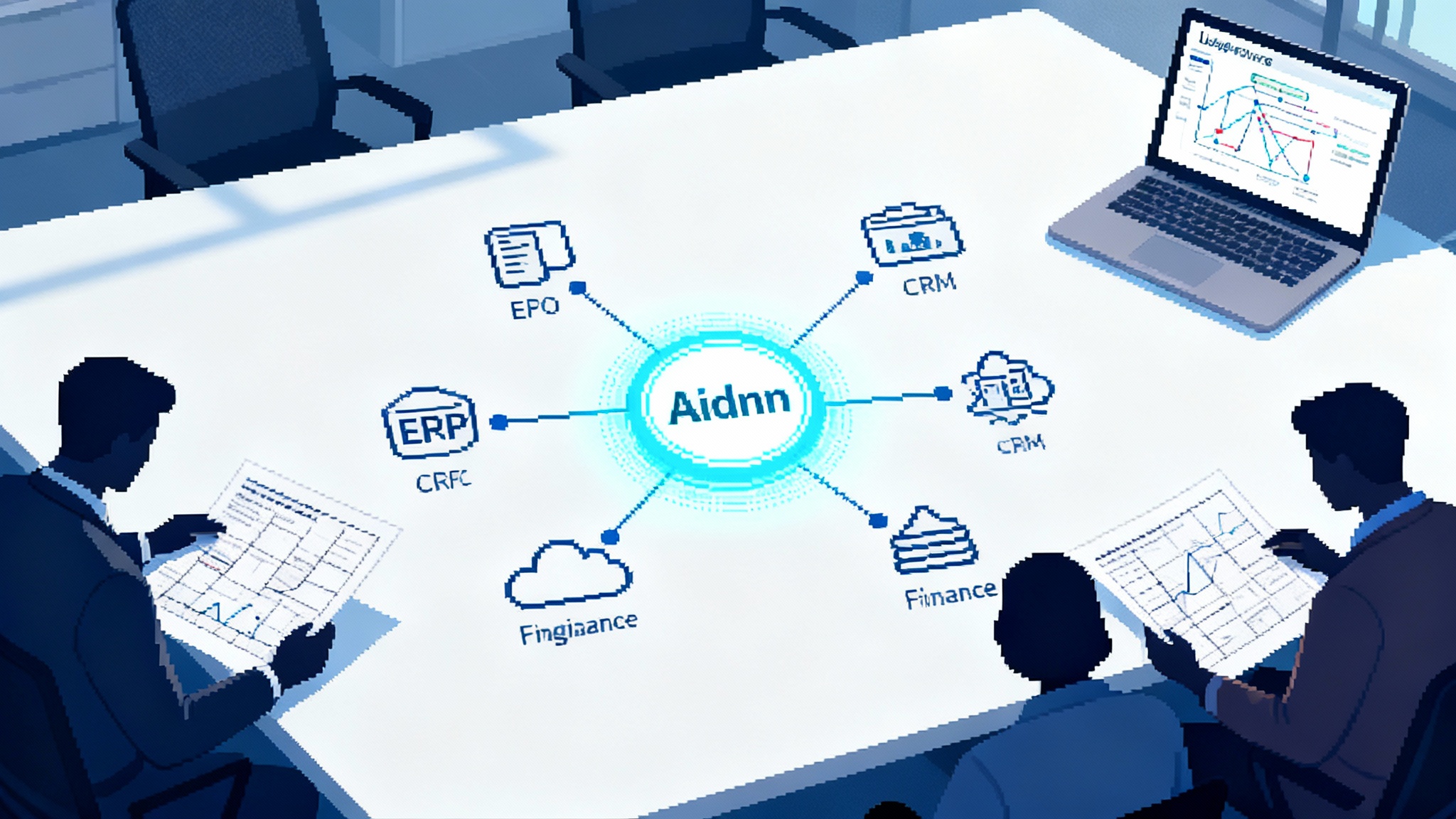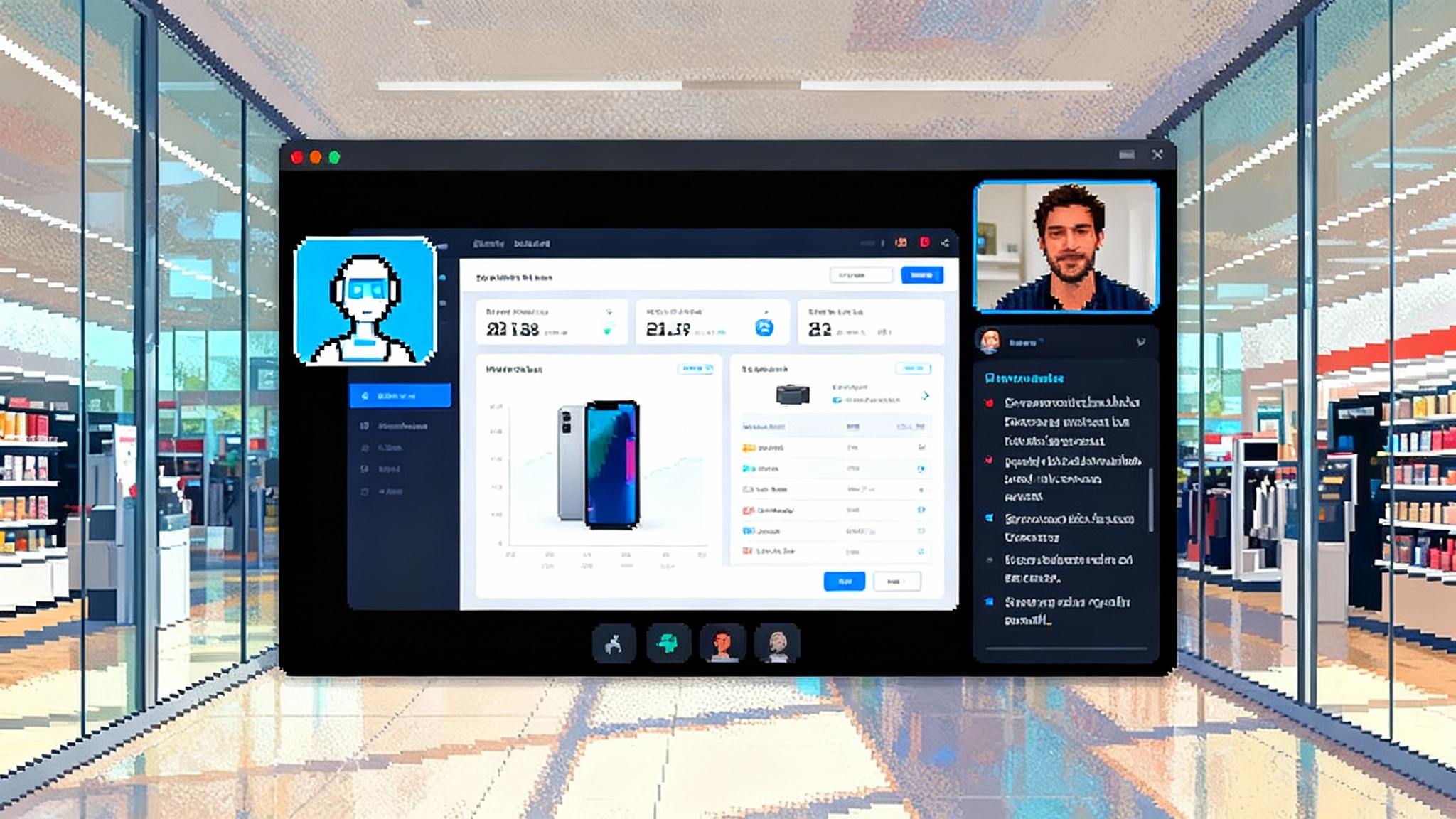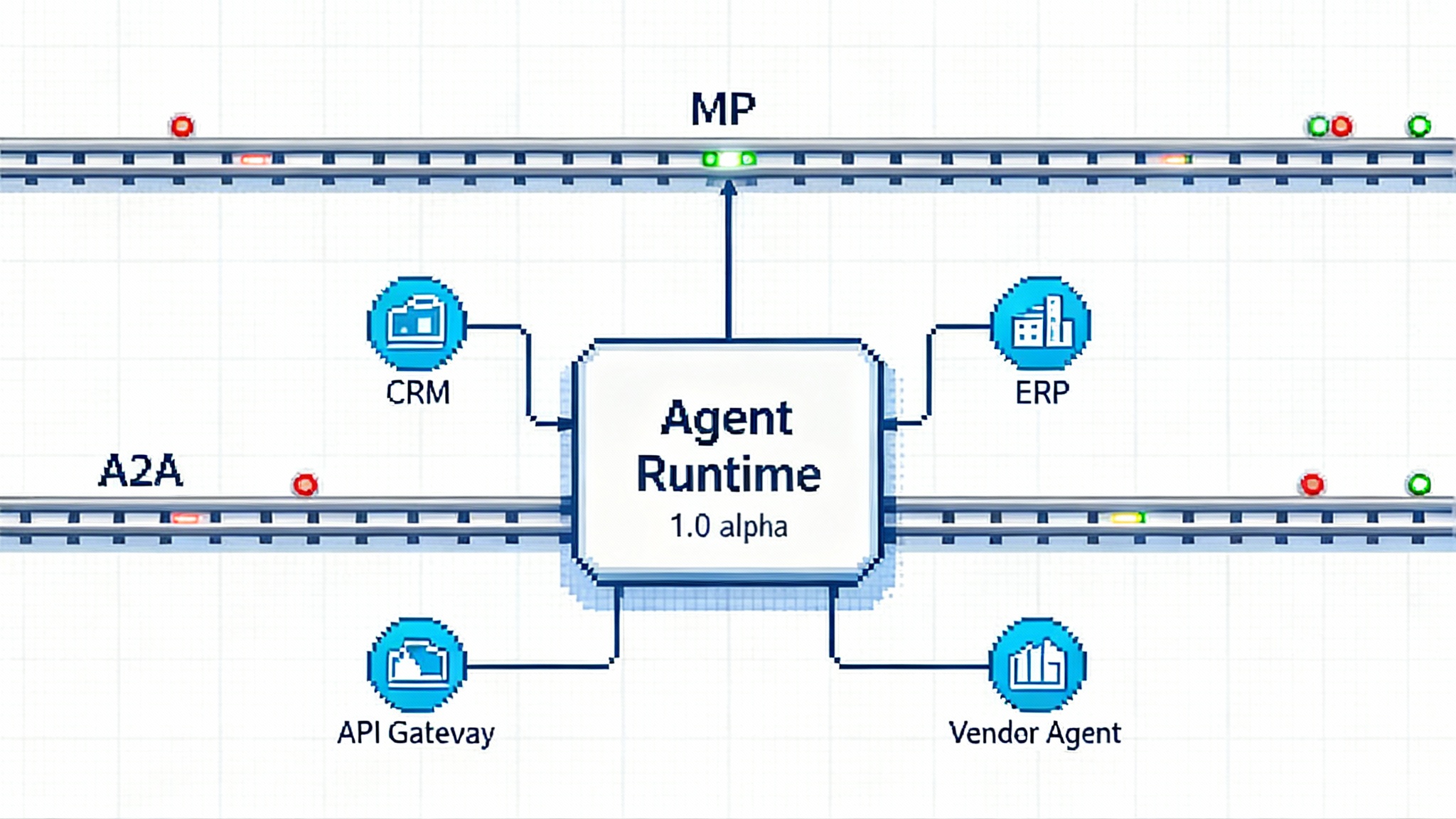Perplexity’s $200 Email Agent and the Trust Shift Ahead
Perplexity put a $200 monthly price on an agent that reads, writes, and schedules inside your inbox. Here is why the math pencils out, the trust controls buyers will demand, and how startups can carve a premium wedge.

The moment an agent stops chatting and starts doing
A price tells a story. Perplexity did not price its new Email Assistant at a hobbyist tier. At 200 dollars per month, the message is plain. This is not novelty software. It is a worker that manages your inbox and calendar, acts on your behalf, and absorbs the chores that drain your week.
Call it the upmarket turn for do work agents. After a long season of conversational demos, the center of gravity is shifting to agents that perform durable work inside the tools where teams already live. Email and scheduling are the most sensitive of those surfaces. They hold promises, debts, disputes, and the next million dollars of revenue. To belong there, an agent must be trusted, observable, and reliable in ways that look more like a back office system than a chat app.
The core signal is not only the price. It is the assumption embedded in the product that the agent will be granted permission to read, write, and organize your messages and book your time without constant babysitting. That assumption unlocks a different product shape, a different economics, and a different standard of care.
Why the 200 dollar price makes sense
A quick back of the envelope makes the pricing logic intuitive.
- If an agent reliably saves a manager 30 minutes a day by triaging email and scheduling meetings, that is about 10 hours a month. At a fully loaded rate of 150 dollars an hour, which is common for knowledge workers, those 10 hours are worth 1,500 dollars.
- If that same agent prevents two calendar mishaps per month, such as a double booking or a missed customer handoff, the avoided cost can easily exceed 200 dollars once you factor in lost goodwill or delayed deals.
- The agent also reduces cognitive load. That is not soft value. Fewer context switches mean higher throughput on the deep work that matters. Even a small improvement in weekly output compounds.
The price tells you who the buyer is. This is not a mass market add on. It is for people who have genuine email entropy and high cost of errors: executives, sellers, recruiters, founders, and operations leads. It also points to a sales motion that resembles software as a service for teams, not a casual consumer app. With that motion comes scrutiny. Buyers will ask about permissions, logs, controls, and guarantees.
The technical unlock: scopes and durable state
Trust is not a vibe. It is an interface. The first technical requirement for an email and calendar agent is deep, explicit authorization through the OAuth 2.0 Authorization Framework.
- The agent should request scopes that map to concrete abilities, such as read emails, send messages, create labels, move threads, and manage calendars. Shallow scopes are not enough. A real assistant needs the same verbs a human would have.
- Those scopes must be granular and revocable. A buyer should be able to grant read and label abilities to start, then later upgrade to send and delete once confidence is earned. Scope design becomes a product feature, not a compliance afterthought.
- Tokens must be stored and refreshed securely, ideally bound to an identity layer that supports single sign on, multi factor authentication, and automated offboarding. The less time a token sits idle with broad powers, the better.
Next comes durable state. A do work agent is not a stateless model completing a single prompt. It is a long lived process with memory and obligations. It needs a queue for planned actions, a timeline of what it has done, a cache of user preferences and norms, and a way to reconcile when the world changes.
Consider routine scheduling. To move a customer call, the agent must parse constraints, propose new times, place holds, resolve conflicts, and finalize. It must handle time zones, travel buffers, and room resources. If a human intervenes mid flow, state should not be lost. This is orchestration, not one shot inference.
For readers tracking the evolution of agent tooling, this shift echoes the production shift for agents with LangChain 1.0 alpha, where determinism, tool adapters, and background tasks became first class.
Auditability is the trust engine
When an agent acts inside the inbox, every action is legible or it is a trust withdrawal.
- Immutable action journal. Every step the agent takes should be recorded with timestamps, inputs, outputs, and a reference to the policy that allowed it. Think of it as a bank statement for your mailbox.
- Explainable intent. For each action, the agent should store the intent in human terms, such as triaged to billing because the thread mentions invoice and purchase order. If a model was involved, that rationale should be summarized in plain language and linked to the evidence it used.
- Diff views and undo. Users need a reversible path. Moving fifty threads to a new label should generate a diff and a one click rollback. Delete should default to archive, or at least to a soft delete window. Reversible actions buy confidence.
- Human in the loop modes. Approval queues let a user or team manager spot check before the agent acts. The best pattern is tiered autonomy. Start in propose mode, then graduate to act for low risk categories, then enable full autopilot for tasks with a proven track record.
- Policy over prompts. Hard rules should gate capabilities. For example, never email external recipients after 7 p.m. local time without a draft review, or never reschedule a customer call within 24 hours unless the customer proposes the change.
Auditability is not decoration. It is the control surface a buyer uses to justify the decision to grant deep permissions. Without it, the sales cycle stalls.
For teams already thinking about controls, adjacent work in agent-native security for enterprise AI is a useful lens. The mechanics are different, but the themes are the same: explicit policies, transparent logs, and rapid rollback.
The reliability bar is enterprise grade
An agent that touches calendars and email must meet operational standards similar to core systems.
- SLOs and SLAs. Define target reliability, for example 99.9 percent task completion within a given window, and commit to a contract with credits for misses. Buyers understand this language, and it signals maturity.
- Deterministic tool calls. The agent should use structured tools for actions such as search messages, apply label, and send reply, with strict parameter validation. Free text generations should be wrapped by validators that check recipient lists, date formats, and forbidden phrases.
- Idempotency and retries. Network flakiness and provider rate limits are part of life. Every action should be idempotent, which means a retry does not double send. If you need a refresher, the concept of idempotence is a helpful grounding. Use backoff strategies and dead letter queues when tasks fail repeatedly.
- Incident response. Publish clear runbooks for outages and misfires. Offer a visible status page, paged alerts for enterprise customers, and post incident reviews that explain what changed.
- Evaluation harness. Hold out a set of golden tasks, run them daily, and graph drift. Track precision on classification tasks, success rate on multi step flows, and the rate of human escalations.
A buyer cannot easily see your model architecture, but they can see how often the tool quietly does the right thing.
Pressure on platform suites
Perplexity’s move lands in the backyards of Google and Microsoft. Email and calendar are the crown jewels of Workspace and Microsoft 365. These companies already sell assistants inside their suites, and they control the interfaces and permissions that third parties need.
This creates a strategic fork. The platform owner can bundle an agent as part of the suite, prioritizing deep integration and broad coverage, or it can price a premium add on that competes head to head with independent vendors. Bundling threatens independent agents, but premium add ons open a lane for specialists that outperform on a narrow job.
There is also a policy angle. Platform owners can tighten default scopes, slow down approvals for sensitive permissions, or privilege first party agents in subtle ways. The optics are delicate. If independent agents consistently deliver higher value for power users, and if buyers are willing to pay, blunt platform tactics risk backlash. On the other hand, incumbents can lean on their unique advantages, such as domain wide controls, data loss prevention, and uniform policy across email, documents, chat, and meetings.
In the near term, a 200 dollar price validates a market for autonomous inbox and scheduling beyond the bundle. That forces a response. Either incumbents raise the quality bar of their built in assistants to the point that independent tools struggle to differentiate, or they cede a premium tier to vendors that move faster and commit to deeper accountability on the tasks that matter most.
For readers following the platform layer, the pattern rhymes with the rise of open rails for AI agent commerce. When rails harden, it becomes easier to compete on guarantees rather than hype.
The premium wedge for startups
A wedge is a narrow point of entry that can widen into a durable position. A 200 dollar benchmark gives startups permission to be expensive if they remove pain that people truly feel.
Three properties define the wedge here.
- High trust, high stakes, repetitive work. Think recruiting coordination, customer renewal workflows, partner onboarding, or executive communications. The work is the same every week, small mistakes are costly, and teams already document the playbook.
- Workflow native, not tab native. The agent lives inside email and calendar, or it observes those surfaces and acts through first class integrations. No one wants to copy and paste between a chatbox and the inbox.
- Proof of value in days. The wedge should show time saved and errors avoided in the first week. This is how you win budget before procurement fatigue sets in.
Startups win by being the best at a narrow job, then expanding to adjacent tasks that share the same inputs and outputs. A recruiting scheduling agent can grow into candidate communications and reference checks. A customer success inbox agent can extend into entitlement checks and renewal pricing. With each step, the trust you earned carries forward.
What founders should build, buy, and measure
Founders planning to enter this market need a clear playbook.
Where to build: vertical deep work wedges
Pick a workflow where outcomes are measurable and errors are obvious.
- Sales development inbox. Auto classify inbound leads, extract account data, draft personalized follow ups, schedule discovery calls, and keep the customer relationship management system in sync.
- Recruiting coordination. Parse inbound applications, route to the right recruiters, propose slates of interview times based on panel availability, pre write confirmation notes, and rebook quickly when conflicts arise.
- Customer support resolution. For premium tiers, have the agent triage support emails, pull entitlement and health score, propose next steps, and escalate with a draft response.
- Billing operations. Detect invoice issues, route to finance, propose credits based on policy, and schedule calls to resolve disputes.
The pattern is similar. Start with narrow classification and triage, graduate to action with approvals, then allow full autopilot for well understood subflows.
What to buy: runtime, identity, and observability
Building an agent is not only about models. It is about the runtime around them.
- Agent runtime. You need orchestration for multi step workflows, tool use, memory, and recovery. Look for support for function calling, deterministic tool adapters, and safe interrupt or resume. Evaluate how the runtime handles background tasks and schedules.
- Identity and policy. Invest early in a central identity layer with single sign on, multi factor authentication, and role based access control. Add a policy engine with human readable rules that gate each high risk action.
- Connectors and data governance. Use well maintained connectors to email and calendar providers. Support customer managed keys and data residency if you target regulated industries. Design for least privilege. Ask for scopes in stages, and make it obvious to the user what each upgrade enables.
- Observability. Ship with a task timeline, trace search, heat maps for misfires, and redaction for sensitive data. Make logs human friendly. Your users will read them when something goes wrong.
Buy what is undifferentiated heavy lifting, such as enterprise grade logging and identity. Build what defines your wedge, such as the domain specific classifier or the scheduling optimizer that encodes your customers’ quirks.
How to measure trust: SLAs, reversibility, and humans in the loop
Trust is measurable, and you should treat it like a product metric.
- Define a Service Level Agreement and instrument it. Track successful task completion, time to completion, and error rate by task type. Publish the numbers to customers and hold yourself accountable.
- Require reversible actions for the first month of any deployment. Every destructive operation should have a rollback path. Keep a weekly cadence where you review reversals and decide whether the agent should graduate to direct action for that task.
- Keep humans in the loop where the outcome is hard to verify automatically. Use approval queues with clear thresholds. For example, auto send for calendar moves under 24 hours that are user initiated, require approval if changing a customer meeting, always draft and propose if the email includes legal or pricing language.
- Maintain a coverage map. List the tasks your agent handles, the percentage that run in autopilot, and the ones still in propose or draft mode. Publish this map so buyers can see progress.
The goal is not to remove humans. It is to allocate human attention to the smallest surface with the largest impact on safety and quality.
What could go wrong, and how to reduce the blast radius
Agents that act can make mistakes, and in email those mistakes are visible.
- Misclassification. The agent may route a customer complaint to a low priority folder. Mitigation, run dual routing for two weeks and compare, require confidence thresholds, and sample for review.
- Adversarial content. Emails can contain bait that triggers unwanted actions, such as sending credentials or rescheduling a key meeting. Mitigation, require safelists for recipients and links, prohibit certain actions unless the initiator matches a trusted identity, and add pattern based guards for sensitive phrases.
- Conflicting schedules. The agent may rebook a meeting to a time that breaks an unwritten rule, such as never book back to back interviews for a panelist. Mitigation, encode norms as policies, simulate candidate schedules before sending, and require human approval for first time changes with new stakeholders.
- Privacy drift. Over time, more scopes are granted than necessary. Mitigation, run a monthly permission review, show a changelog of scopes, and automatically downgrade unused permissions.
No agent is perfect. The difference between an acceptable mistake and a disaster is how quickly you can detect, explain, and undo.
The broader shift: agents that do, not chat
We are moving from chat bots that answer questions to agents that fulfill obligations. The distinction matters. A model that writes a draft is useful. A system that reliably cleans your inbox overnight, schedules six interviews by morning, and sends gentle nudges to teammates who owe you a document is a different category.
This shift changes how you buy. The meaningful comparison is no longer which model sounds the smartest. It is which agent has the clearest permissions, the best audit trail, the strongest guarantees, and the fewest surprises. Buyers will compare the total cost per successful task, not the cost per token. They will ask how many actions run without approval, not how many benchmarks the model passed.
Conclusion: the new contract of trust
Perplexity’s 200 dollar Email Assistant is not just a product launch. It is a declaration that the agent era will be won by systems that earn permission to act. The stack that wins combines deep scopes that map cleanly to real verbs, durable state and orchestration that survive the messiness of work, auditability that gives humans confidence, and reliability that looks like an enterprise system, not a demo.
That stack pressures the platforms to respond, and it opens a premium wedge for startups that commit to the boring excellence of operations. For founders, the invitation is clear. Choose a narrow job where time and trust are scarce, buy the undifferentiated plumbing, build the domain brain, and measure trust like revenue. If you do, you will discover the real point of an agent. It is not to converse. It is to keep promises on your behalf, and to do so quietly, day after day.








